Sperm Lecture(s) Vocabulary - Another Mega List
5.0(1)
5.0(1)
Card Sorting
1/81
Earn XP
Description and Tags
Study Analytics
Name | Mastery | Learn | Test | Matching | Spaced |
|---|
No study sessions yet.
82 Terms
1
New cards
semen
The fluid delivered through the penis during ejaculation. It has a complex composition produced in the male sex organs; supplied by the seminal vesicles and prostate gland.
2
New cards
seminal vesicle
This gland in males, along with the prostate gland, secretes the fluid component of semen that lubricates and nourishes sperm.
3
New cards
seminal plasma
The liquid portion of semen. It lubricates the sperm duct/urethra and provides an alkaline environment to protect the sperm; secretes from the epididymis.
4
New cards
epididymis
A long, coiled duct on the outside of the testis in which sperm matures. It receives sperm from the seminiferous tubules, stores sperm, and propels it toward the penis.
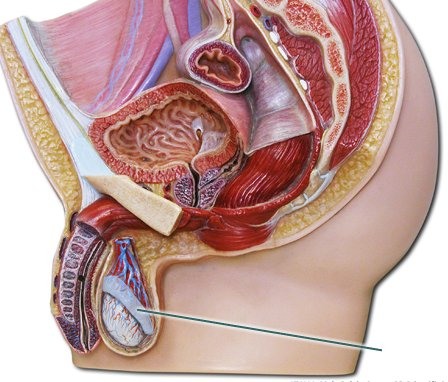
5
New cards
testis
Male reproductive organ that produces sperm and hormones. Each contain coiled seminiferous tubes where sperm production occurs.
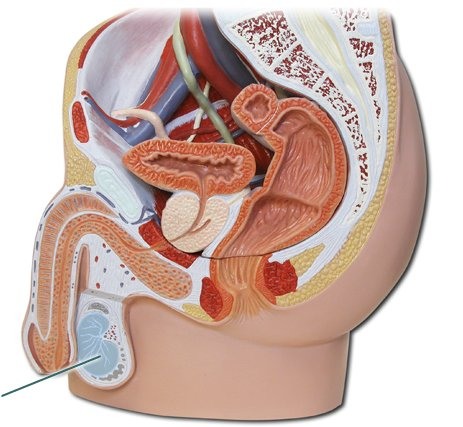
6
New cards
vas deferens
Upon stimulation, these ducts carry mature spermatozoa from the epididymis to the urethra to be ejaculated.
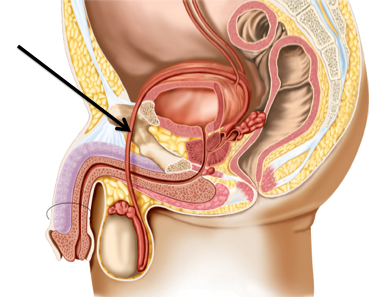
7
New cards
disgust
This emotion is conveyed when the assailant urinates on the victim's body after a sexual assault.
8
New cards
accessory glands
The prostate, seminal vesicles, Cowper's glands, and glands of Littre contribute 75-90% of the volume of ejaculate and are called:
9
New cards
spermatozoa
These cells' purpose is to fertilize ova (sing. ovum) and thus determine the sex of the ova after being fertilized. They contain half of the normal human genetic material, being considered haploid.

10
New cards
spermatozoon
The singular form of spermatozoa.
11
New cards
XY
The common male genotype.
12
New cards
XX
The common female genotype.
13
New cards
seminiferous tubules
Small, long, thread-like tubules in the testes where spermatogenesis takes place.
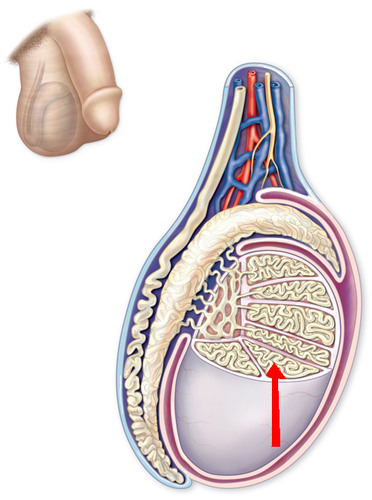
14
New cards
prostate
This area of male reproductive anatomy is the source of acid phosphatase (AP) and prostate specific antigen (PSA), which are components of seminal plasma. It is often followed with the word "gland."
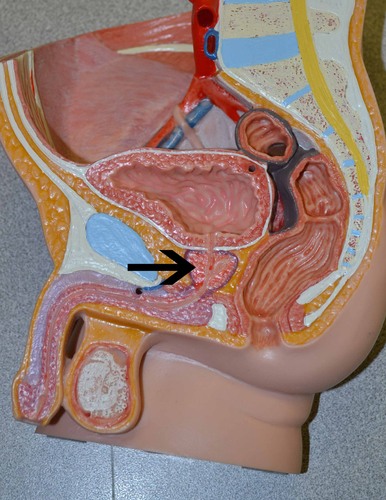
15
New cards
plasmalemma
Also called the "sperm plasma membrane," this layer covers the sperm.
16
New cards
head
This area of the sperm contains the nucleus and is the only region that can penetrate the ovum for fertilization.
17
New cards
acrosome
A vesicle, or cap, at the tip of a sperm that contains enzymes to penetrate the ovum.
18
New cards
hyaluronidase
This enzyme is located in the acrosome to help the sperm head penetrate the ovum.
19
New cards
midpiece
Also called the "neck," this section of the sperm connects the head and tail sections. It contains mitochondria to produce energy for flagellar motility.
20
New cards
tail
The part of the sperm that makes it motile. It is very fragile and is often lost in ejaculates.
21
New cards
spermatogenesis
The name for the production of sperm cells. This process occurs in the seminiferous tubules of the testis and has three phases.
22
New cards
spermatocytogenesis
The stage of spermatogenesis where immature spermatogonia undergo mitotic division. It is where diploid cells become primary spermatocytes (remain diploid).

23
New cards
meiosis
The stage of spermatogenesis where the diploid number that was present in the first phase becomes haploid to form 23 chromosomes. This stage covers the development of primary spermatocytes to spermatids.
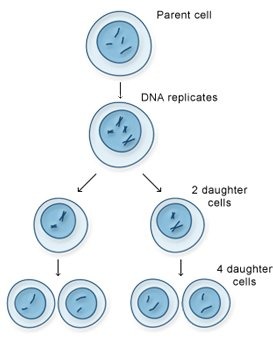
24
New cards
spermatogonia
This is the name for undifferentiated male germ cells. Forming in the seminiferous tubules, this is what exists at the beginning of spermatogenesis.
25
New cards
spermatid
The name for the immature male sperm cell. This cell matures as it moves towards the lumen of the seminiferous tubules.
26
New cards
spermiogenesis
The stage of spermatogenesis where spermatids undergo morphological changes such as the spherical sperm head becoming elongate and the acrosome forming in the head.
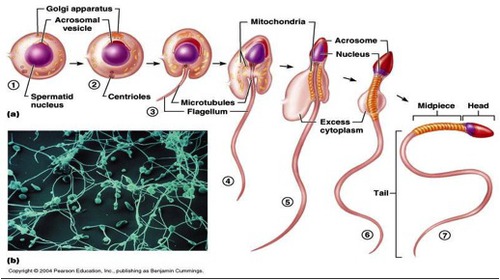
27
New cards
chromatin
The genetic material that condenses in the head as the spermatid matures.
28
New cards
10 weeks
The amount of time it takes for mature spermatozoa to develop.
29
New cards
five
The number of classes of immunoglobulin humans have.
30
New cards
immunoglobulin G
This immunoglobulin is the most abundant class found in blood serum. Shortened to IgG.
31
New cards
ABAcard p30
This immunochromatographic test utilizes monoclonal anti-human PSA antibodies for detection of seminal fluid. This is a confirmatory test.
32
New cards
RSID semen test
This immunochromatographic test utilizes monoclonal anti-human Semenogelin (Sg) antibodies, SgI and SgII for detection of human seminal fluid.
33
New cards
prostate-specific antigen
The backronym of PSA. This substance occurs in high concentration in semen and liquifies seminal fluid after a period of time. It is a marker specific to human seminal plasma. Also known as p30.
34
New cards
gammaseminoprotein
The first described protein in the seminal fluid. It was later named "p30" because it weighs 30,000 Daltons.
35
New cards
semi-quant line
This third line on a PSA test shows how much PSA (its concentration) is in the sample.
36
New cards
coagulation
This occurs to human semen immediately after ejaculation.
37
New cards
fibronectin, semenogelin I, semenogelin II
These are the three major gel-forming proteins.
38
New cards
Cowper's gland
either of a pair of small glands that open into the urethra at the base of the penis and secrete a constituent of seminal fluid.
39
New cards
glands of Littre
mucous glands found along the entire length of the penile urethra
40
New cards
German Case
A case where a woman had sex with two men only hours apart. There were two ova present and thus she had twins; one baby was black and the other was white.
41
New cards
zinc
The metal ion that inhibits PSA. Upon the mixing of PSA, semenogelin I, and semenogelin II in the semen, this ion will bind to and stabilize semenogelin I, allowing PSA to break down semenogelin and liquify the seminal fluid.
42
New cards
semenogelin I
A disulfide linked complex of 52 kDa protein, it is the smaller component of the two semenogelin products.
43
New cards
semenogelin II
Two forms of an Sg I related protein of ~71 and ~76 kDA, it is the larger component of the two semenogelin proteins.
44
New cards
aspermia
This condition results in a failure to ejaculate due to a complete lack of semen. It is associated with infertility and can be caused by excessive drug use or the result of prostate surgery.
45
New cards
normozoospermia
This describes normal semen parameters.
46
New cards
teratozoospermia
This condition results in increased numbers of sperm with abnormal morphology.
47
New cards
oligoasthenoteratozoospermia
Shortened to OAT, this condition results in sperm variables all being subnormal. It is a combination of oligozoospermia, asthenozoospermia, and teratozoospermia.
48
New cards
leucocytospermia
This condition results in there being an increased amount of leucocytes (white blood cells) in semen.
49
New cards
necrozoospermia
This conditions results in all sperm being non-viable or non-motile.
50
New cards
globozoospermia
This condition is rare and results in the sperm heads lacking an acrosome, leading to infertility.
51
New cards
azoospermia
This condition results in there being no spermatozoa in the semen and may be temporary or permanent. This condition may be caused by a vasectomy, drugs, high fever, alcoholism, disease, a nutritional deficiency, or a genetic condition. Absence of motile sperm
52
New cards
oligospermia
This condition results in the deficiency in the number of spermatozoa in semen. This condition may be temporary or permanent.
53
New cards
oligozoospermia
This condition results in reduced sperm numbers. A mild case contains a concentration of 2-20 million/mL, while a severe case contains a concentration of
54
New cards
asthenozoospermia
This condition results in reduced sperm motility.
55
New cards
Y chromosome
This chromosome is structurally unique as a fertility chromosome and is the smaller one of the two.
56
New cards
sex-determining region Y
Shortened to SRY, it is home to gene regions that determine structure, tooth enamel, hairy ears, and "junk" gene regions. It is a gene on Y chromosome that codes for transcription factor that initiates testis differentiation & formation of male gonads as well as other features; works with chromosome 17.
57
New cards
testicles
SRY and at least one gene on Chromosome 17 stimulate the expression of the male phenotype in the form of these organs, which in turn secrete testosterone.
58
New cards
vasectomy
This operation severs or ligates the vas deferens carrying sperm to the penis, resulting in there being no sperm in the semen, but can contain some components of plasma. P30 and DNA (STR and Y-STR) are still produced.
59
New cards
Klinefelter syndrome
This syndrome is the most common genetic cause of azoospermia, and can also result in oligospermia due to calcium deposits forming in the seminiferous tubules.
90% of men who have this syndrome will carry an extra X chromosome, causing the most common abnormal karyotype to be XXY, but 10% will have a mosaic combination of XXY/XY chromosomes.
90% of men who have this syndrome will carry an extra X chromosome, causing the most common abnormal karyotype to be XXY, but 10% will have a mosaic combination of XXY/XY chromosomes.
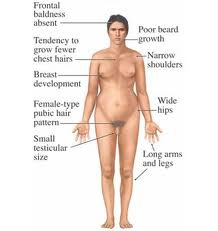
60
New cards
advanced paternal age
If the father is of an older age upon the fertilization of an ovum, this results in a higher chance of the son developing Klinefelter syndrome (XXY).
61
New cards
supermale
A male individual displaying the XYY chromosome structure. This structure results in oligozoospermia or azoospermia, and is a type of Klinefelter syndrome.
62
New cards
X chromosome
This chromosome may harbor genes that control male fertility.
63
New cards
ZFX gene
This gene codes for the zinc finger protein and is located on the X chromosome.
64
New cards
Ullrich-Turner syndrome
Also called "monosomy X," this chromosomal disorder in females occurs when either an X chromosome is missing, making the person XO instead of XX, or part of one X chromosome is deleted. It can be seen with a second X or with half normal half not cells (rare).
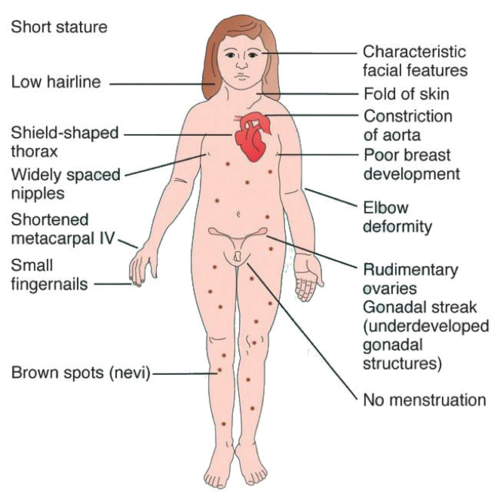
65
New cards
super female
Also called "triple X syndrome" or "trisomy X," this syndrome is where a female has a XXX or poly-X chromosome structure. While there are few or no symptoms, some people experience delayed development.
66
New cards
sexual assault nurse examiner
The backronym of SANE.
67
New cards
sexual assault response team
The backronym of SART.
68
New cards
Ace Hardware
A case where a man crawled through basement window and sexually assaulted a woman her in bed carried her down to the basement and did it again on the couch. The woman picked a random man out of the line and was wrong; she said she knew it was him because she was wearing an Ace Hardware hat. It turns out she was mad at her husband for going on a trip and this was her bright idea to get back at him. She was made to take out a paper apology.
69
New cards
persistent
Sperm found 12 hours to 70 days after death (non-motile), are considered to be this:
70
New cards
post-coital interval
The time after sexual intercourse has occurred. It is important because:
- it relates to the timing of the event
- it determines the relationship to intercourse, and
- it can identify different populations of sperm cells.
- it relates to the timing of the event
- it determines the relationship to intercourse, and
- it can identify different populations of sperm cells.
71
New cards
differential extraction
The process by which an analyst can separately isolate male and female DNA from a mixture of female epithelial cells and male sperm cells, such as might be found in sexual assault evidence.
72
New cards
Kobe Bryant case
A case where a girl had consensual sex, then went home and told her husband that she was sexually assaulted. It turns out she actually wasn't and was drained of money.
73
New cards
vaginal secretions
A complex mixture of cells and secretions, the epithelial cells of this substance are large and contain glycogen, thus they will stain with iodine. There is no test to identify this vaginal substance.
74
New cards
Lugol's iodine solution
This solution is a type of stain used to find the presence of glycogen granules, which is found in vaginal cells. These glycogenated squamous cells are found in oral mucosa, the male urinary tract, and the glans penis.
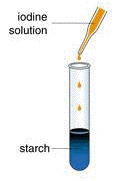
75
New cards
National Forensic Science Technology Center
The backronym of NFSTC.
76
New cards
acid phosphatase
An enzyme found in high concentration in semen; degrades faster than semen.
77
New cards
acid phosphatase test
This presumptive test that works by changing into a purple color in the presence of possible semen. It is shortened as the AP test and does not differentiate between human and animal semen.
78
New cards
semen confirmatory test
The visual presence of sperm, a microscopic exam, staining, and the PSA/p30 immunochromatographic test are all this type of test.
79
New cards
semen presumptive test
The acid phosphatase (AP) is considered to be this type of test.
80
New cards
Christmas tree stain
This chemical differentially stains sperm and other cells when mounted on microscope slides. Aluminum sulfate and nuclear fast red (nucleophilic) stains the head, while picric acid and indigo carmine (basophilic) stains the tail.
81
New cards
Kernechtrot Picroindigocarmine Stain
The backronym of KPIC and is the scientific term for Christmas tree stain.
82
New cards
Lucky by Alice Sebold
A memoir of a woman violently raped in broad daylight and a detective tells her that she is lucky to be alive. She was coerced into identifying a man who did not rape her named Anthony Broadwater. This was turned into a racial issue. The director of the move about the book was frustrated with plot holes and hired a P.I., who figured out what really happened.